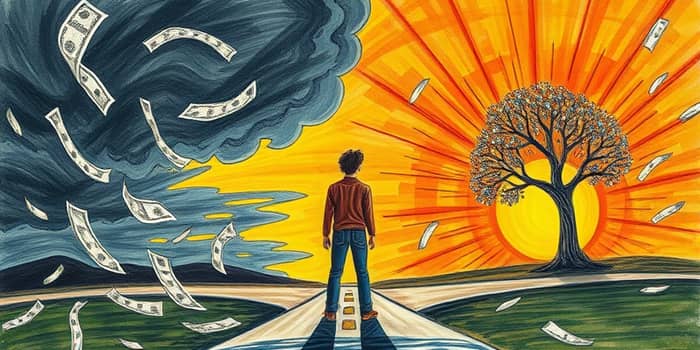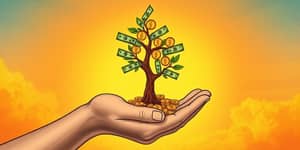Bankruptcy can feel like an insurmountable setback, but understanding its nature and path to recovery can turn despair into hope. In this comprehensive guide, we explore what bankruptcy entails, its types, the legal journey, and practical tips to rebuild stronger than before.
Definition of Bankruptcy
At its core, bankruptcy is a legal process for individuals or businesses to seek relief from unmanageable debts. It offers two primary solutions: liquidating assets or restructuring debts to satisfy creditors.
By invoking federal bankruptcy laws, debtors can pause creditor actions, obtain a fresh financial start, and adhere to a court-approved plan. While daunting, this process exists to provide a fair resolution when conventional repayment proves impossible.
Types of Bankruptcy
- Chapter 7 (Liquidation): The most common individual bankruptcy. Nonexempt assets are sold to pay creditors, and the remaining qualifying debts are discharged.
- Chapter 13 (Wage Earner’s Plan): Allows individuals with regular income to keep assets by following a three- to five-year repayment plan under court supervision.
- Chapter 11 (Reorganization): Primarily for businesses, this chapter lets companies continue operating while restructuring obligations to become viable again.
- Chapter 12 (Family Farmers): A specialized reorganization designed for family farmers, combining the flexibility of Chapter 13 with tailored provisions for agricultural operations.
The Bankruptcy Process
- Filing a Petition: The journey begins by submitting a petition and schedules to the federal bankruptcy court.
- Automatic Stay: Immediately upon filing, an automatic stay halts most creditor actions, giving the debtor breathing room.
- Trustee Appointment and 341 Meeting: A trustee is assigned to oversee asset sales and ensure compliance. Creditors can question the debtor at a meeting of creditors.
- Credit Counseling and Financial Education: Mandatory counseling sessions before filing and after discharge help debtors regain control of personal finances.
Each step involves strict deadlines and documentation requirements. Missing a court date or failing to disclose assets can jeopardize the entire case.
Consequences of Bankruptcy
While bankruptcy can deliver a fresh start through discharged debts, it also carries significant drawbacks:
Credit Damage: A bankruptcy record can remain on a credit report for up to ten years, making loans and credit cards more expensive or difficult to obtain.
Loss of Nonexempt Assets: Depending on state exemptions, certain property—such as a vacation home or valuable collectibles—may be sold to repay creditors.
Social Stigma and Emotional Toll: Beyond financial implications, many debtors struggle with shame, stress, and strained relationships during and after the process.
Recovering After Bankruptcy
- Debt Discharge: Qualifying debts are forgiven, offering a psychological and financial reset.
- Rebuilding Credit: By responsibly managing a secured credit card or a small loan, individuals can steadily improve their credit score.
- Lessons Learned: Understanding budgeting, emergency funds, and avoiding high-interest debt prevents future pitfalls.
Recovery is a marathon, not a sprint. Consistent, small positive actions—like paying every bill on time—compound to restore financial credibility.
Legal and Financial Considerations
Not everyone qualifies for every chapter. Eligibility requirements vary by income, debt levels, and asset value. Consulting a qualified attorney or financial counselor helps determine the optimal chapter and whether alternatives exist.
Before resorting to bankruptcy, consider:
- Negotiating with creditors for lower interest rates or extended terms.
- Debt consolidation loans that combine balances into a single payment.
- Informal payment plans directly with creditors to avoid court involvement.
If these options fail, bankruptcy remains the structured legal path to debt relief under federal protection.
Personal and Business Implications
Individuals face not only financial hurdles but also emotional recovery. Seek support groups or therapy to address stress and rebuild confidence.
For businesses, bankruptcy can preserve operations but may damage supplier relationships and investor confidence. A well-crafted reorganization plan under Chapter 11 can pave the way for sustainable growth post-bankruptcy.
Key Statistics and Trends
These numbers underscore the prevalence of financial distress and the importance of understanding both the costs and benefits of bankruptcy.
Taking the First Step Toward Recovery
Facing bankruptcy can feel overwhelming, but knowledge empowers action. Whether you’re an individual weighed down by mounting credit card bills or a family farmer seeking relief, the process offers legal protection and a path to rebuild.
Engage with qualified professionals—attorneys, financial advisors, credit counselors—to craft a plan aligned with your goals. Anchored by practical financial strategies and a willingness to learn from past mistakes, you can emerge from bankruptcy not just solvent, but financially stronger and more resilient.
Remember: bankruptcy is a chapter in your financial story, not the final paragraph. With the right guidance, you can write a new narrative—one defined by stability, growth, and long-term prosperity.
References
- https://www.uscourts.gov/court-programs/bankruptcy/bankruptcy-basics/process-bankruptcy-basics
- https://www.investopedia.com/terms/b/bankruptcy.asp
- https://www.uscourts.gov/court-programs/bankruptcy/bankruptcy-basics
- https://www.experian.com/blogs/ask-experian/credit-education/bankruptcy-how-it-works-types-and-consequences/
- https://www.nerdwallet.com/article/finance/bankruptcy
- https://www.uscourts.gov/court-programs/bankruptcy/bankruptcy-basics/chapter-11-bankruptcy-basics
- https://selfhelp.courts.ca.gov/bankruptcy-guide










